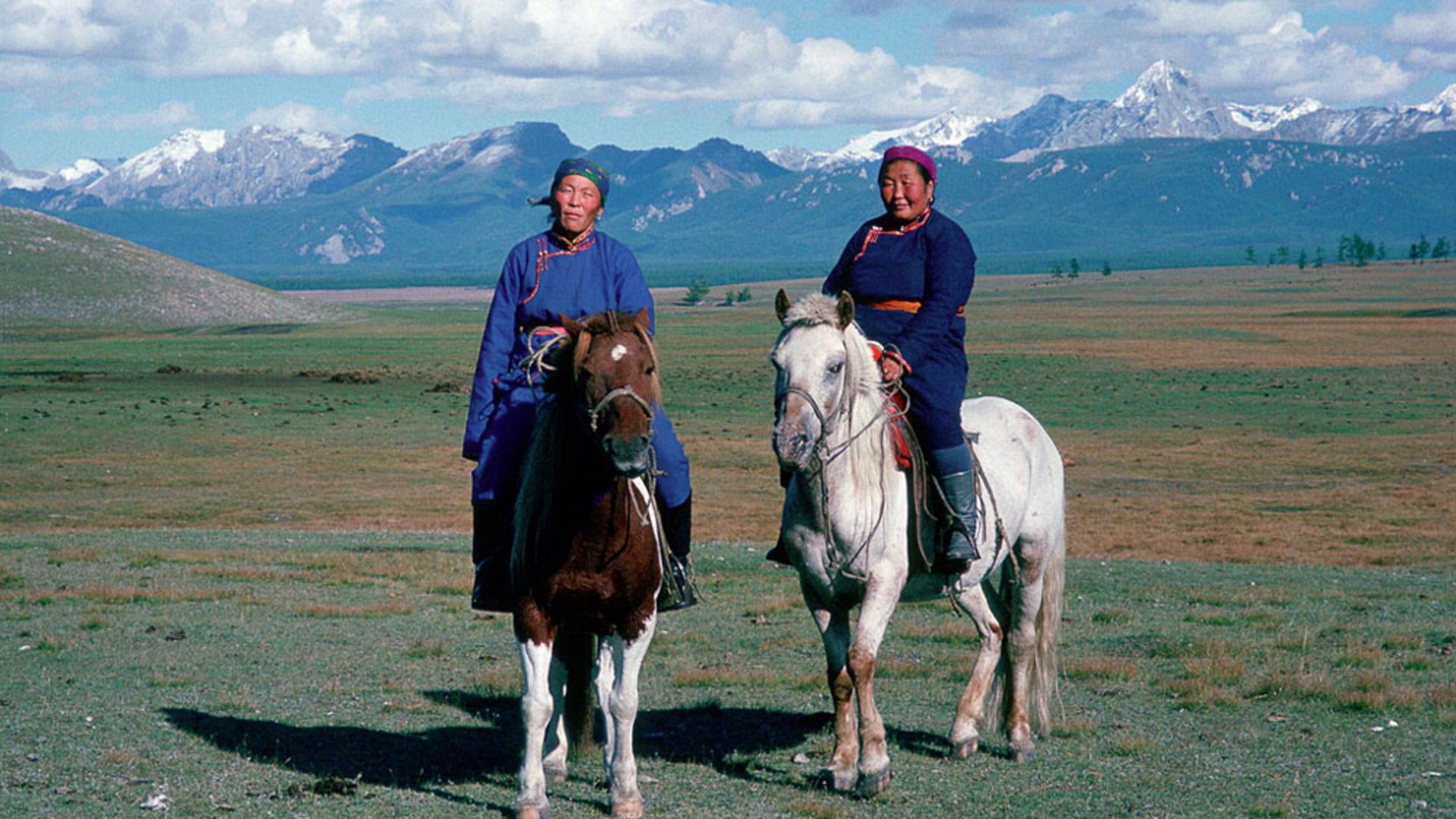
Rental fee: $15
Discounted fee for BAMPFA members: $11
Members: to receive your discount, you must log in to Eventive with the same email address you use to receive BAMPFA member communications.
Fascinating . . . a landmark in the West’s attempts to represent the East.
—Bérénice Reynaud
Ottinger’s serenely beautiful, eight-hour ethnographic project, Taiga, is a study in epic time, a journey through northern Mongolia structured in ten parts and thirty-eight chapters. Ottinger’s skillful camerawork captures the natural landscape (crystal-clear air and water, mountainous terrain, and silvery-golden vegetation) and records the activities of the Darkhad and Sojon Urijanghai peoples with great sensitivity, without hurry. Ottinger’s filmmaking technique foregrounds the sound of the wind and the effect of the elements. She follows nomadic yak and reindeer herders to their autumn, winter, and summer camps, and observes their daily lives, holidays, and religious rites led by shamans. Subjects in the film comment on how things were before; they speak of what has been lost, forgotten, or changed. The “narrative” trajectory of Taiga moves from the sublime landscape of the wilderness to settlements of the Mongolian-Russian period, concluding its trek in the cityscape of Ulaanbaatar. Exploring ideas of community and ritualistic practice, Taiga is a work of rare beauty made by one of cinema’s most provocative filmmakers.
—Susan Oxtoby
- Year1992
- Runtime172 minutes
- LanguageMongolian, Tuvan
- CountryGermany
- DirectorUlrike Ottinger
- ScreenwriterUlrike Ottinger
- CinematographerUlrike Ottinger, Michael Veigel
Rental fee: $15
Discounted fee for BAMPFA members: $11
Members: to receive your discount, you must log in to Eventive with the same email address you use to receive BAMPFA member communications.
Fascinating . . . a landmark in the West’s attempts to represent the East.
—Bérénice Reynaud
Ottinger’s serenely beautiful, eight-hour ethnographic project, Taiga, is a study in epic time, a journey through northern Mongolia structured in ten parts and thirty-eight chapters. Ottinger’s skillful camerawork captures the natural landscape (crystal-clear air and water, mountainous terrain, and silvery-golden vegetation) and records the activities of the Darkhad and Sojon Urijanghai peoples with great sensitivity, without hurry. Ottinger’s filmmaking technique foregrounds the sound of the wind and the effect of the elements. She follows nomadic yak and reindeer herders to their autumn, winter, and summer camps, and observes their daily lives, holidays, and religious rites led by shamans. Subjects in the film comment on how things were before; they speak of what has been lost, forgotten, or changed. The “narrative” trajectory of Taiga moves from the sublime landscape of the wilderness to settlements of the Mongolian-Russian period, concluding its trek in the cityscape of Ulaanbaatar. Exploring ideas of community and ritualistic practice, Taiga is a work of rare beauty made by one of cinema’s most provocative filmmakers.
—Susan Oxtoby
- Year1992
- Runtime172 minutes
- LanguageMongolian, Tuvan
- CountryGermany
- DirectorUlrike Ottinger
- ScreenwriterUlrike Ottinger
- CinematographerUlrike Ottinger, Michael Veigel